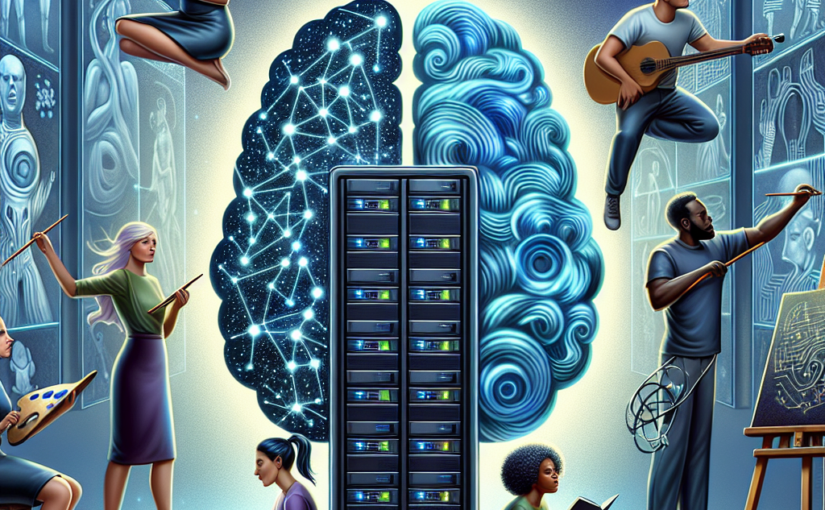The intersection of artificial intelligence and creativity has sparked a fascinating revolution in how we create and experience art. As AI tools become more sophisticated, they’re challenging our traditional understanding of creativity while opening new possibilities for human expression.
The Nature of AI Creativity
Unlike human creativity, which springs from emotional experiences and cognitive processes, AI creativity relies on sophisticated algorithms and vast datasets. Through advanced neural networks and machine learning techniques, AI systems can analyze patterns and generate original content that pushes creative boundaries.
Traditional creative processes are being transformed by tools like:
• Generative AI Art Platforms
Modern AI art generators like Midjourney and DALL-E have revolutionized visual creation. These tools use complex algorithms to transform text prompts into stunning artwork, allowing artists to explore new creative directions. For instance, a simple prompt like “surreal forest at twilight” can generate multiple unique interpretations, each with its own artistic merit.
• AI Music Composition
The musical landscape is experiencing its own AI revolution. Platforms like Boomy and Aiva are democratizing music creation, allowing anyone to compose original pieces regardless of their musical background. These tools can generate complete songs, continue melodies, or create harmonies that complement existing work.
• Literary Innovation
In the writing world, large language models are crafting everything from poetry to short stories. While these systems can generate coherent and contextually relevant content, they’re increasingly being used as collaborative tools that enhance rather than replace human creativity.
The Creative Partnership
Rather than viewing AI as a replacement for human creativity, many artists and creators are embracing it as a powerful collaborative tool. This partnership is leading to innovative hybrid works that combine human intuition with AI’s computational power.
Consider these emerging trends:
• Interactive installations merging AI-generated art with human curation
• Cross-genre musical experiments blending classical compositions with modern styles
• Collaborative writing projects where AI suggests plot developments or character arcs
The Ongoing Debate
While AI continues to produce impressive creative works, the debate over whether machines can truly be creative persists. Some argue that AI’s lack of emotional depth and consciousness means it can’t achieve true creativity. Others contend that the originality and value of AI-generated work speak for themselves.
Looking Ahead
As AI creative tools become more sophisticated, we’re likely to see even more integration into creative workflows. The future points toward a symbiotic relationship where AI enhances human creativity rather than replacing it.
Whether you’re an artist, musician, writer, or simply curious about creative technology, understanding AI’s role in creativity has become increasingly important. The tools are here to stay, and their impact on the creative landscape continues to grow.
For those interested in exploring AI creativity, starting with user-friendly platforms like DALL-E or Boomy can provide fascinating insights into this emerging creative frontier. The key is approaching these tools as supplements to, rather than replacements for, human creativity.

